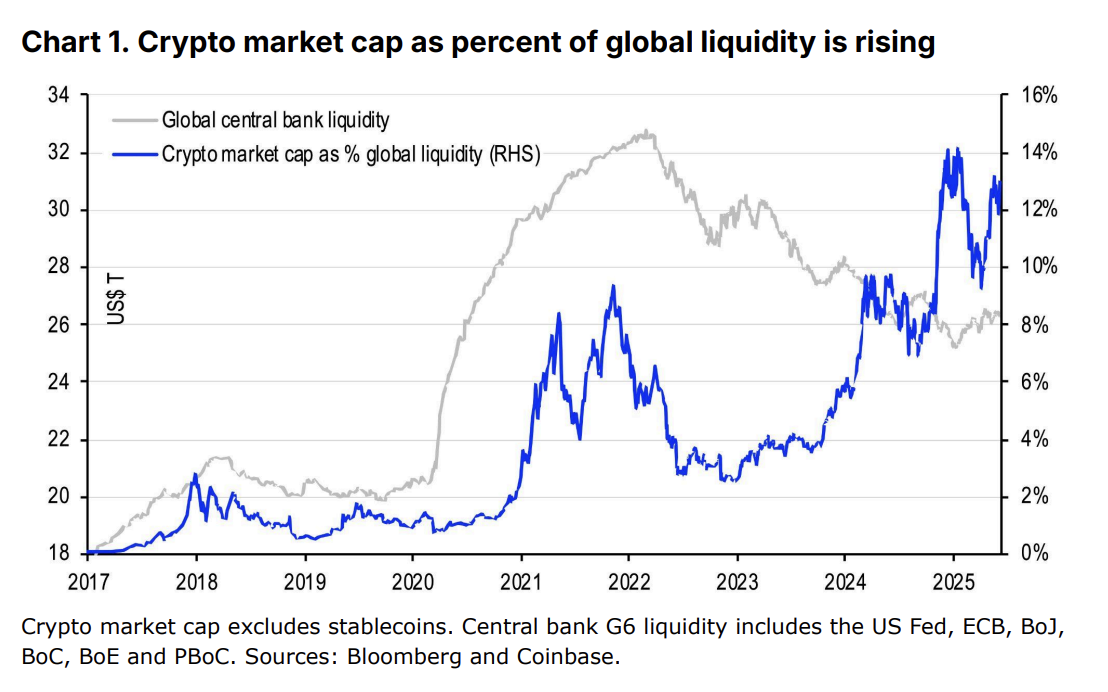-
Coinbase Institutional outlines three pivotal trends set to influence the crypto market in the second half of 2025, emphasizing improved macroeconomic conditions, heightened corporate crypto demand, and enhanced regulatory clarity.
-
With a more optimistic economic outlook and potential Federal Reserve rate cuts, the crypto sector is positioned for sustained growth amid evolving investment strategies and expanding corporate participation.
-
According to Coinbase, clearer regulatory frameworks, particularly around stablecoins and market structure, are expected to foster greater market stability and investor confidence.
Coinbase identifies key drivers for crypto growth in H2 2025: improved macroeconomics, rising corporate demand, and clearer regulations, signaling robust market expansion.
Macroeconomic Improvements Bolster Crypto Market Prospects in H2 2025
Coinbase Institutional’s latest analysis highlights an improving macroeconomic environment as a critical catalyst for crypto market expansion in the latter half of 2025. The report anticipates a scenario where recession risks diminish, potentially avoiding severe economic downturns or stagflation. This outlook is supported by expectations of a Federal Reserve interest rate cut by late 2025, which could inject liquidity and stimulate asset appreciation.
Key liquidity indicators, including the US M2 money supply and the expanding balance sheets of global central banks, suggest that asset prices are unlikely to revert to the depressed levels seen in 2024. This environment creates favorable conditions for cryptocurrencies, particularly bitcoin, to continue their upward trajectory. Controlled inflation and supportive fiscal policies further underpin this positive market sentiment, encouraging both retail and institutional investors to increase their exposure to digital assets.
Corporate Crypto Demand Accelerates with New Investment Strategies
Another significant trend identified by Coinbase is the surge in short-term corporate demand for cryptocurrencies. Currently, around 228 publicly traded companies hold approximately 820,000 BTC, with additional investments in altcoins such as Ethereum (ETH), Solana (SOL), and Ripple (XRP). This growing corporate interest reflects a strategic shift towards digital assets as a component of diversified asset allocation.
Enhanced accounting standards from the Financial Accounting Standards Board (FASB) now permit companies to record digital assets at fair market value rather than recognizing only losses. This change incentivizes increased corporate participation and adoption. Furthermore, the emergence of publicly-traded crypto vehicles (PTCVs) that accumulate crypto assets through equity and convertible bond issuance represents an innovative approach to institutional investment, though it introduces risks related to debt maturities and potential forced asset sales.

Despite these risks, most corporate debts mature between 2029 and 2030, providing ample time for refinancing and reducing immediate liquidation pressures. This financial flexibility supports ongoing crypto accumulation and signals confidence in the long-term value proposition of digital assets.
Regulatory Clarity Enhances Market Stability and Investor Confidence
The third major trend emphasized by Coinbase is the advancement of regulatory frameworks that aim to bring clarity and stability to the crypto market. Moving away from a fragmented “regulation by enforcement” approach, policymakers in the White House and Congress are working towards comprehensive legislation that addresses key issues such as stablecoin regulation and market structure.
Legislative initiatives like the STABLE Act and GENIUS Act are poised to establish rigorous reserve requirements, anti-money laundering protocols, and user protections for stablecoins. These efforts are expected to culminate in unified legislation by August 2025, providing much-needed regulatory certainty.
Additionally, market structure reforms, including the CLARITY Act, seek to delineate the roles of the Commodity Futures Trading Commission (CFTC) and the Securities and Exchange Commission (SEC), building upon prior frameworks such as FIT21. This regulatory evolution is anticipated to enhance transparency, reduce compliance ambiguities, and foster a more robust investment environment.

These regulatory advancements are critical for sustaining long-term growth and attracting institutional capital, as they provide a clearer roadmap for market participants and mitigate systemic risks.
Conclusion
In summary, Coinbase Institutional’s forecast for H2 2025 identifies a confluence of positive macroeconomic trends, expanding corporate crypto engagement, and evolving regulatory clarity as key drivers for the crypto market’s next phase of growth. These factors collectively suggest a more mature and resilient digital asset ecosystem, poised to capitalize on improved economic conditions and legislative frameworks. Investors and stakeholders should monitor these developments closely to navigate opportunities and risks effectively in the evolving crypto landscape.






